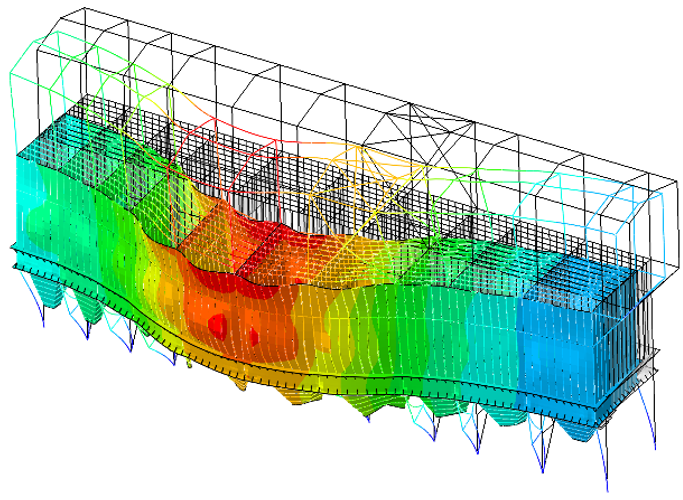Earthquakes are causing increasing economic damage in developed countries as a result of increasing urbanisation, urbanisation and industrialisation of highly exposed regions, as well as the increasing vulnerability and capital intensity of modern technologies, whereas, in developing countries in particular, a high number of deaths due to unsustainable development are to be caused. The main cause of both financial losses and fatalities is the failure of the building due to incorrectly designed and non-earthquake-appropriate structures.
At the CWE, the participating institutes are working on the impact chain of earthquakes, starting with the formation and wave propagation in the underground, through the dynamic interaction of soil movements with different types of structures, and the assessment of failure consequences. The cooperation of geophysicists, geologists and civil engineers is of central importance. The main research areas at the CWE include:
- Soil-building interaction
- Seismic calculation and design approaches
- Reinforcement, insulation and damping measures
- Vulnerability Investigations and Failure Scenarios
- Earthquake investigations of special structures
- New Materials in Earthquake Engineering
Through targeted developments in the listed focal points, new methodological approaches to the earthquake-proof design of buildings are developed across all materials. A special focus is on the analysis of safety-relevant special structures, such as .B industrial plants, dams, power plants, piping systems or infrastructurally important bridge structures, for which some practical design concepts are not yet available. With the Chair of Structural engineering and construction dynamics and the Institute for Steel Construction, the CWE has competent and established partners with extensive experience in the seismic design of special structures.
Another challenge facing the CWE is the assessment of the seismic vulnerability of the building stock in order to plan the necessary upgrading measures in a targeted and efficient manner and to assess possible damage effects in the event of a disaster. Such assessments are becoming increasingly important in Europe, as the impact of earthquakes to be assessed has increased significantly due to recent seismological findings.
The research at the CWE also aims to use new solutions with innovative materials to improve seismic properties and to identify the attachable seismic resistance of modern high-heat insulating products (e.B. filled high-hole stones) through experiments and simulations.
//
